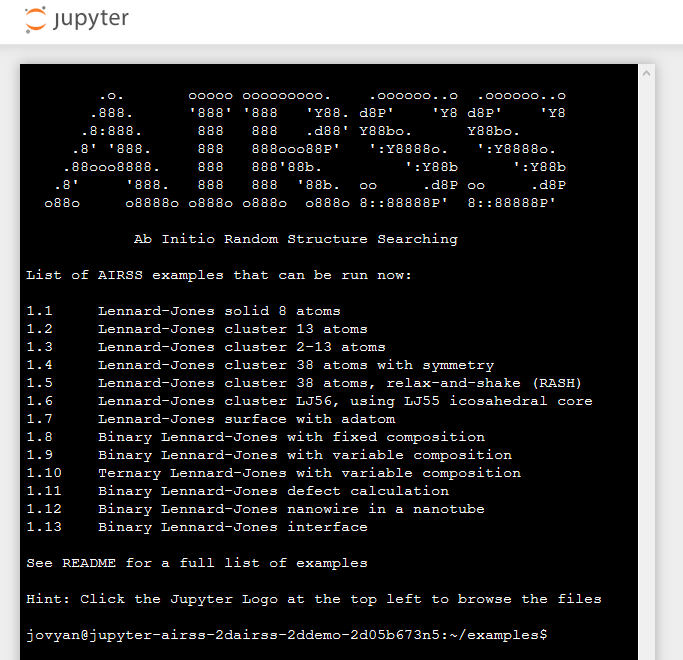
Submitted by Administrator on Thu, 08/08/2019 - 12:42
Materials Theory Group member and PhD student Bonan Zhu has created an interactive online environment for the ab initio random structure searching (AIRSS) code.
The environment uses binder and allows a user to access and run selected examples from the AIRSS code in-browser.
You can access the in-browser interface, and try it yourself here: https://mybinder.org/v2/gl/airss%2Fairss-demo/master?urlpath=terminals/1
Note that it may take a few minutes to build the AIRSS image and deploy it. Once you have command line access, standard bash commands like ls, more and cd can be used to navigate the example directories. Each example contains a README file explaining how to run it.
The AIRSS code implements the random-structure-searching approach to structure prediction, as developed by Pickard and Needs. As well as the online examples above, you can also download and build the full AIRSS code, which is available under the GPL 2.0 licence.
binder uses sponsorship from Google Cloud and OVH.

